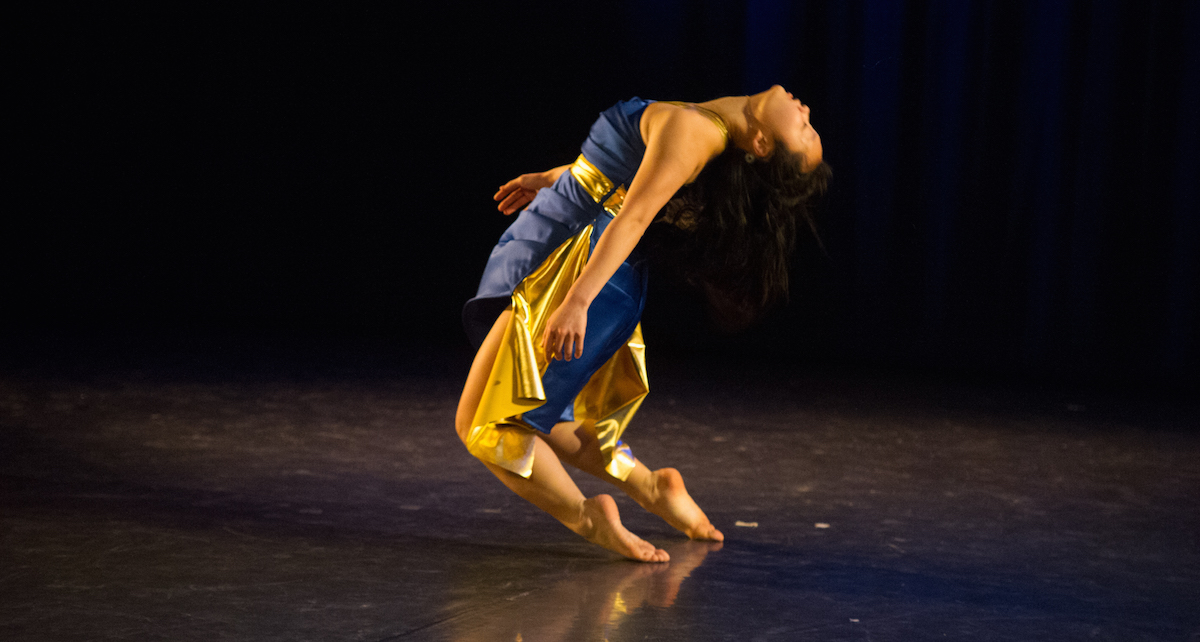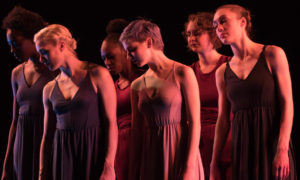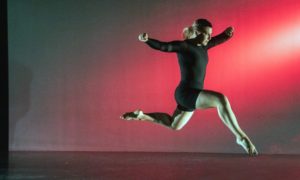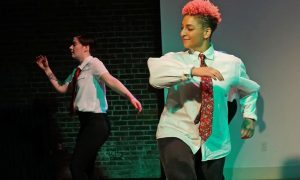Green Street Studios, Cambridge, MA.
Saturday, April 16, 2016.
Dance can illustrate community — with spacial relationships, touch, tension in space between moving (or still) bodies and more. Dance can also build community. In a society that often undervalues the arts, dance thrives when diverse dancers, choreographers and audience members connect and collaborate. The recent Third Life Choreographer Series show at Green Street Studios, in Cambridge, Massachusetts, demonstrated these truths. The show was a fundraiser for enhanced performance equipment at the studio. Kelley Donovan, founder and artistic director of the Third Life series, opened the show thanking Green Street Studios for its continued support of the series over the years. The 10 pieces in the show each had their own unique style, theme and movement material. On the other hand, there was an evident common subject of building, sustaining and thriving in community through movement; yet other pieces exemplified the strength possible in standing in one’s skin. Overall, the show demonstrated that both are possible in dance.
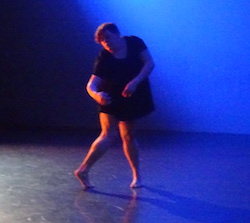
Kelley Donovan. Photo by James Falvo.
Donovan danced her solo, Changing Skin, right after her opening talk (with a few minutes in between for her to warm up). The piece immediately gave off a tribal feel in its earthy, grounded movement and song of a deep-voiced, soulful single chantress. Donovan’s facility as a performer, her pure ease in her movement, is inspiring and impressive, especially considering her courageous comeback from some significant medical issues. Strong, straight lines sometimes punctuated predominately spiraling, circling movement. Lightning-fast phrases interjected slower ones. In the music, in the same way, syncopated harmony lines came in the midst of slower repeated chorus lines. As such, the music and movement qualities came together beautifully and memorably. Through this solo, Donovan showed the strength and beauty possible in the body and soul of one seemingly fearless, incredibly resilient woman.
Wisty Andres’ solo (entitled Solo) demonstrated a different, yet no less powerful, kind of independent feminine strength. I stayed in wide-eyed wonder of what she’d offer next. Andres alternately carved the air, opened up to strong attitudes with flexed hands, and grazed the floor with her hands in deep, deep lunges — all with graceful strength. Although without specific narrative, she seemed to dance the voice of a millenial generation seeking to be heard and respected as individuals. From her patterned leggings to sometimes quirky inflections in the movement, she showed that one can be completely unique and still with impressive technical command. It wasn’t the solo of grandma’s generation but one even she would applaud.
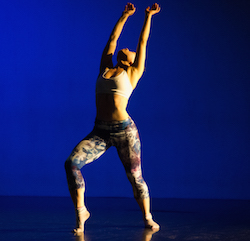
Dancer Wisty Andres. Photo by Charles Daniels Photography.
Improvisation demonstrated the possibility of such uniqueness even in close relationships. The piece featured two dancers, Olivier Besson and Chandra Cantor, moving in impressively heart-warming, yet also pioneering, ways. The two began on a blank white backdrop lit red and blue (two colors often associated with love, emotions and relationships). Cantor ventured out to center stage at one point early in the piece. It was an action that seemed to invite Besson to leave the backdrop, or perhaps grant him the courage to do so. At times, they returned to the backdrop, playing with fun variations such as handstands and walking across it, face-down.
When venturing away from the wall, they explored tender moments of weight-sharing movement and contact improvisation. Intriguingly and impressively, the contact work managed to not seem self-indulgent or become tiring to watch (as some say most often results from contact improvisation in performance). The dancers’ relationship might have conveyed romance to some audience members, but it seemed to me to be more about two people moving together in space, respecting and caring for each other. In all the different types of relationships across our world, those are the things that will contribute progress and harmony to our communities, in my opinion.
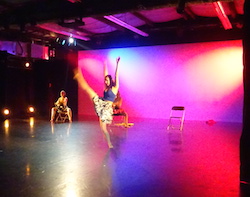
Cambridge Dance Company. Photo by James Falvo.
A few pieces later, it was quite surprising and refreshing to view classical ballet, with five dancers en pointe. Much of the technique and the piano music were very classical in nature. Other elements seemed to create a ballet of 2016, however. For instance, about mid-way through the piece, one dancer began to break formations as a renegade, a brave rogue. She would come back to be a part of the formations, however, before again breaking away. The group seemed to accept her wherever she moved herself. This spoke to, in our social-media driven world, our desires to stand out as individuals yet be part of various collectives (selfies and Facebook groups, anyone?).
The dancers did not often share eye contact, which is not uncommon for plotless ballets. Given that content of community and individuality, however, I wondered if more evident connection between the dancers through eye-contact, and perhaps partnering, could have further enhanced the piece. More sections of slower movement might have also added dynamic interest; most of the movement was very allegro. In any case, the piece demonstrated aspects of community and individuality in a classical style, nevertheless speaking to questions of things that we face in 2016.
This Third Life show overall illustrated how we can be strong as individuals, yet stronger in community. For dance communities struggling to fill houses and support new projects, that’s important to remember. I look forward to seeing what the Third Life Choreographer Series, a strong community of strong individuals, will continue to offer!
By Kathryn Boland of Dance Informa.
Photo (top): KAIROS Dance Theater. Charles Daniels Photography.


